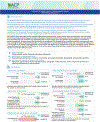Pharmacologic Treatment of Primary Osteoporosis or Low Bone Mass to Prevent Fractures in Adults: A Living Clinical Guideline From the American College of Physicians
- PMID: 36592456
- PMCID: PMC10885682
- DOI: 10.7326/M22-1034
Pharmacologic Treatment of Primary Osteoporosis or Low Bone Mass to Prevent Fractures in Adults: A Living Clinical Guideline From the American College of Physicians
Erratum in
-
Correction: Pharmacologic Treatment of Primary Osteoporosis or Low Bone Mass to Prevent Fractures in Adults.Ann Intern Med. 2023 Jun;176(6):882-884. doi: 10.7326/L23-0120. Epub 2023 May 16. Ann Intern Med. 2023. PMID: 37186925 No abstract available.
Abstract
Description: This guideline updates the 2017 American College of Physicians (ACP) recommendations on pharmacologic treatment of primary osteoporosis or low bone mass to prevent fractures in adults.
Methods: The ACP Clinical Guidelines Committee based these recommendations on an updated systematic review of evidence and graded them using the GRADE (Grading of Recommendations Assessment, Development and Evaluation) system.
Audience and patient population: The audience for this guideline includes all clinicians. The patient population includes adults with primary osteoporosis or low bone mass.
Recommendation 1a: ACP recommends that clinicians use bisphosphonates for initial pharmacologic treatment to reduce the risk of fractures in postmenopausal females diagnosed with primary osteoporosis (strong recommendation; high-certainty evidence).
Recommendation 1b: ACP suggests that clinicians use bisphosphonates for initial pharmacologic treatment to reduce the risk of fractures in males diagnosed with primary osteoporosis (conditional recommendation; low-certainty evidence).
Recommendation 2a: ACP suggests that clinicians use the RANK ligand inhibitor (denosumab) as a second-line pharmacologic treatment to reduce the risk of fractures in postmenopausal females diagnosed with primary osteoporosis who have contraindications to or experience adverse effects of bisphosphonates (conditional recommendation; moderate-certainty evidence).
Recommendation 2b: ACP suggests that clinicians use the RANK ligand inhibitor (denosumab) as a second-line pharmacologic treatment to reduce the risk of fractures in males diagnosed with primary osteoporosis who have contraindications to or experience adverse effects of bisphosphonates (conditional recommendation; low-certainty evidence).
Recommendation 3: ACP suggests that clinicians use the sclerostin inhibitor (romosozumab, moderate-certainty evidence) or recombinant PTH (teriparatide, low-certainty evidence), followed by a bisphosphonate, to reduce the risk of fractures only in females with primary osteoporosis with very high risk of fracture (conditional recommendation).
Recommendation 4: ACP suggests that clinicians take an individualized approach regarding whether to start pharmacologic treatment with a bisphosphonate in females over the age of 65 with low bone mass (osteopenia) to reduce the risk of fractures (conditional recommendation; low-certainty evidence).
Figures





Comment in
-
Pharmacologic Treatment of Primary Osteoporosis or Low Bone Mass to Prevent Fractures in Adults: A Living Clinical Guideline From the American College of Physicians (Version 1, Update Alert).Ann Intern Med. 2024 Jun;177(6):eL230113. doi: 10.7326/L24-0113. Epub 2024 May 7. Ann Intern Med. 2024. PMID: 38710077 Free PMC article. No abstract available.
-
Pharmacologic Treatment of Primary Osteoporosis or Low Bone Mass to Prevent Fractures in Adults: A Living Clinical Guideline From the American College of Physicians (Version 1: Update Alert 1: Surveillance Note 1).Ann Intern Med. 2025 Mar;178(3):e2403547. doi: 10.7326/ANNALS-24-03547. Epub 2025 Feb 4. Ann Intern Med. 2025. PMID: 39899855 No abstract available.
